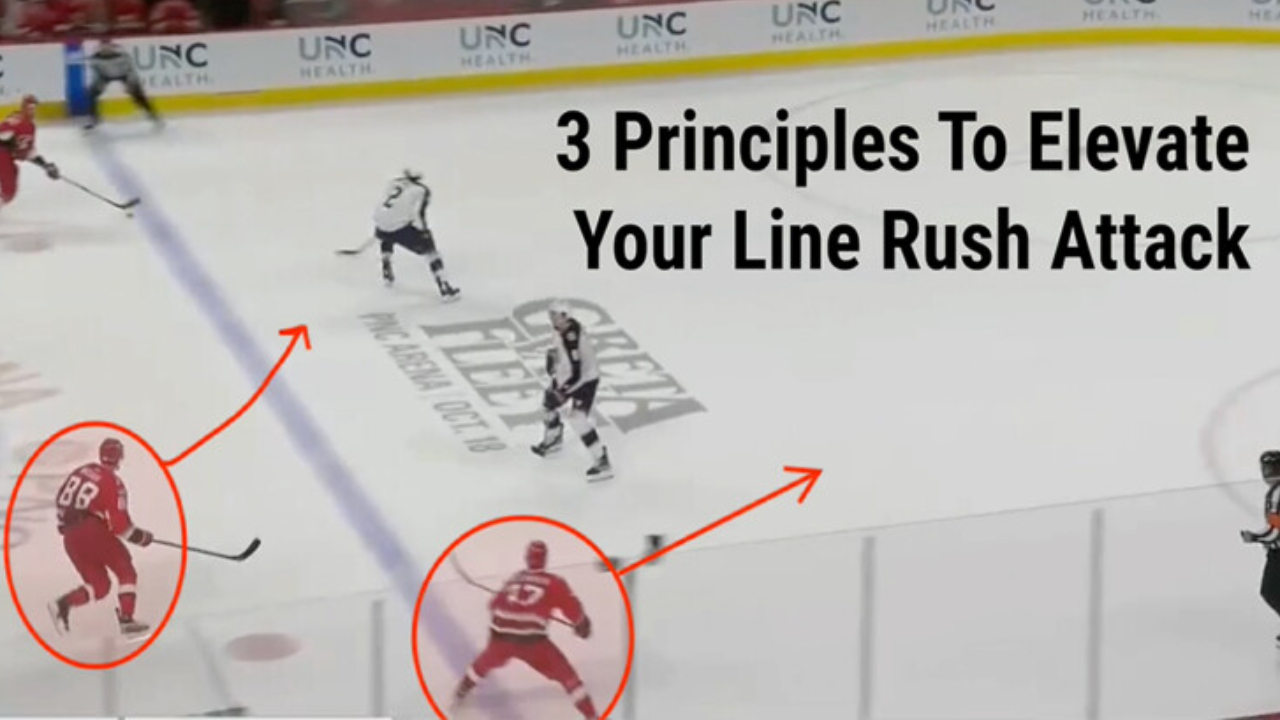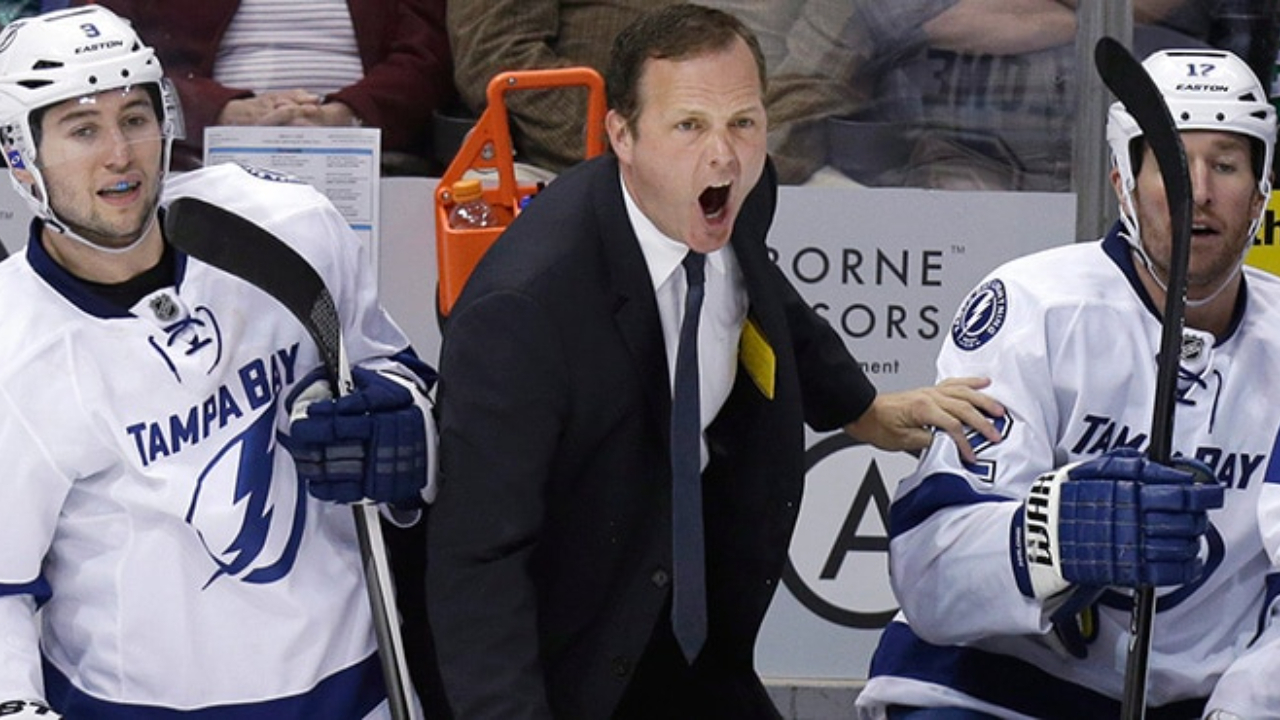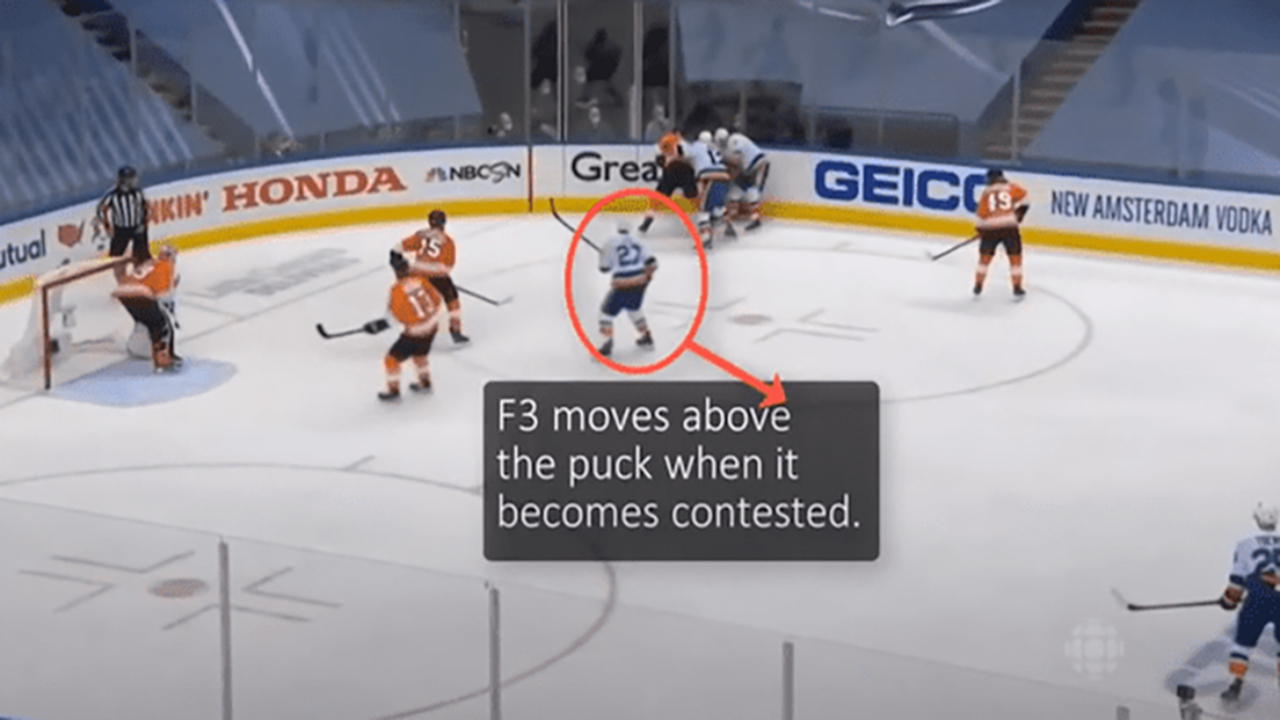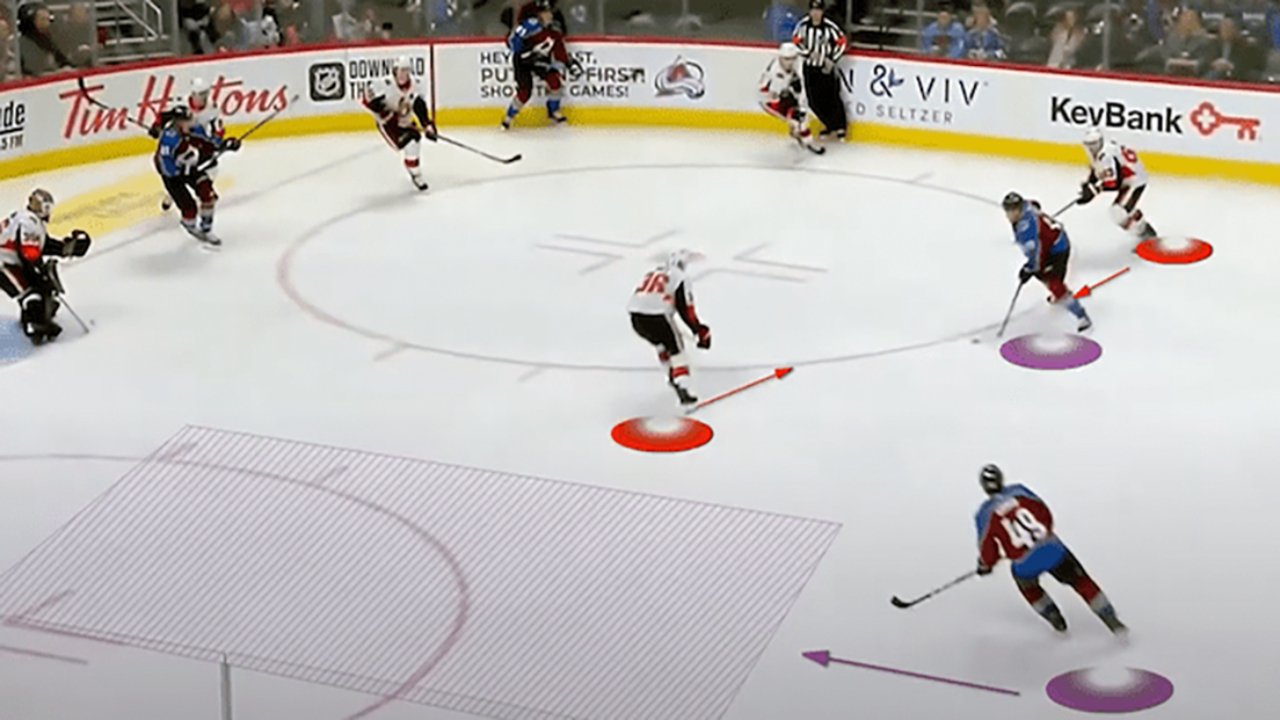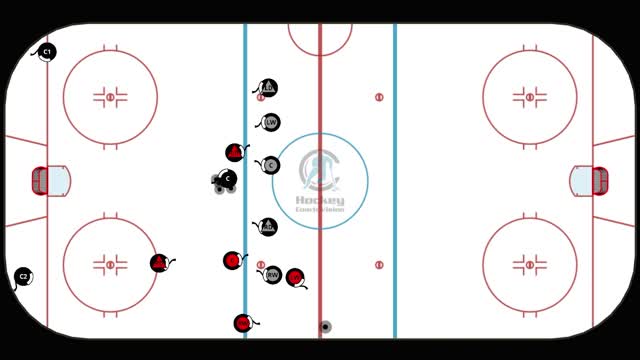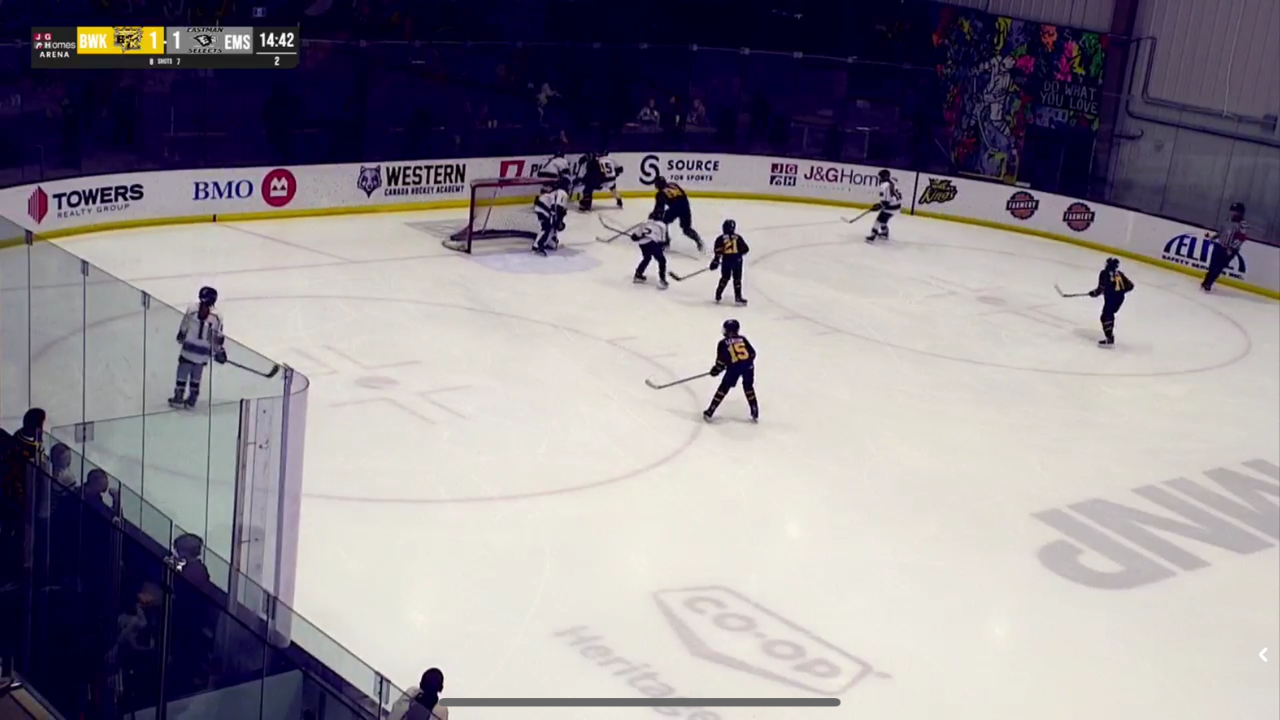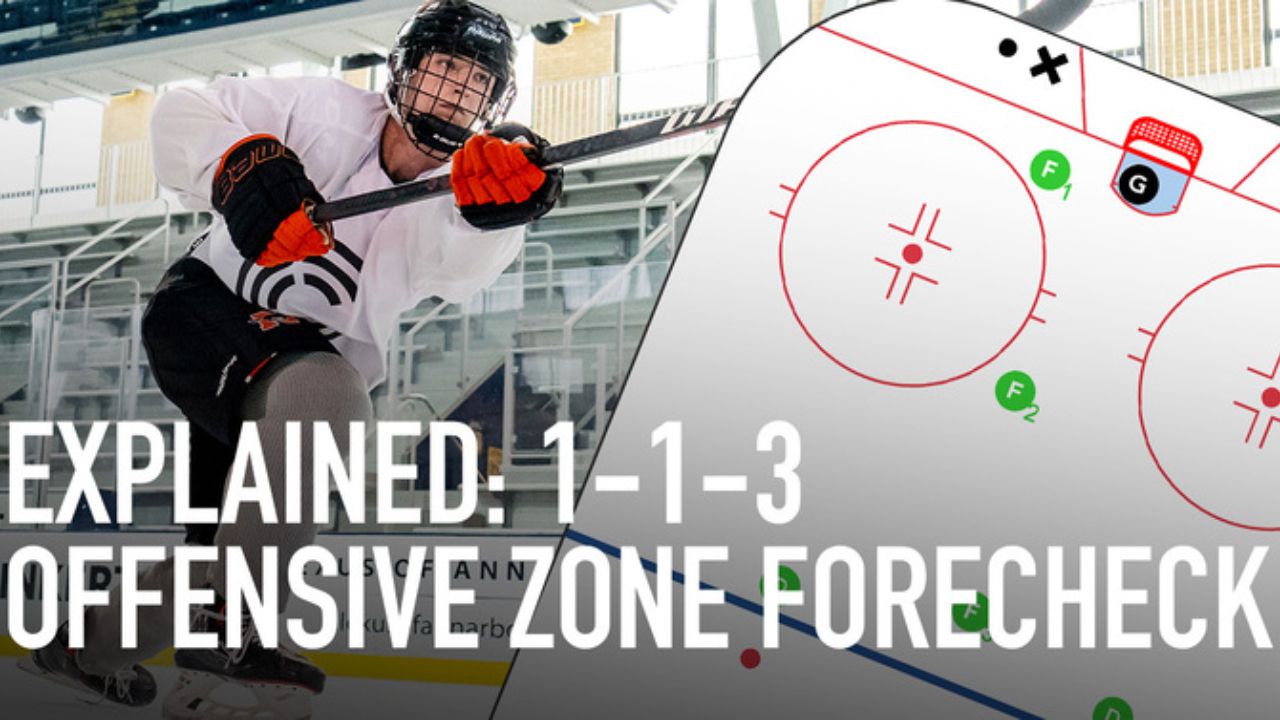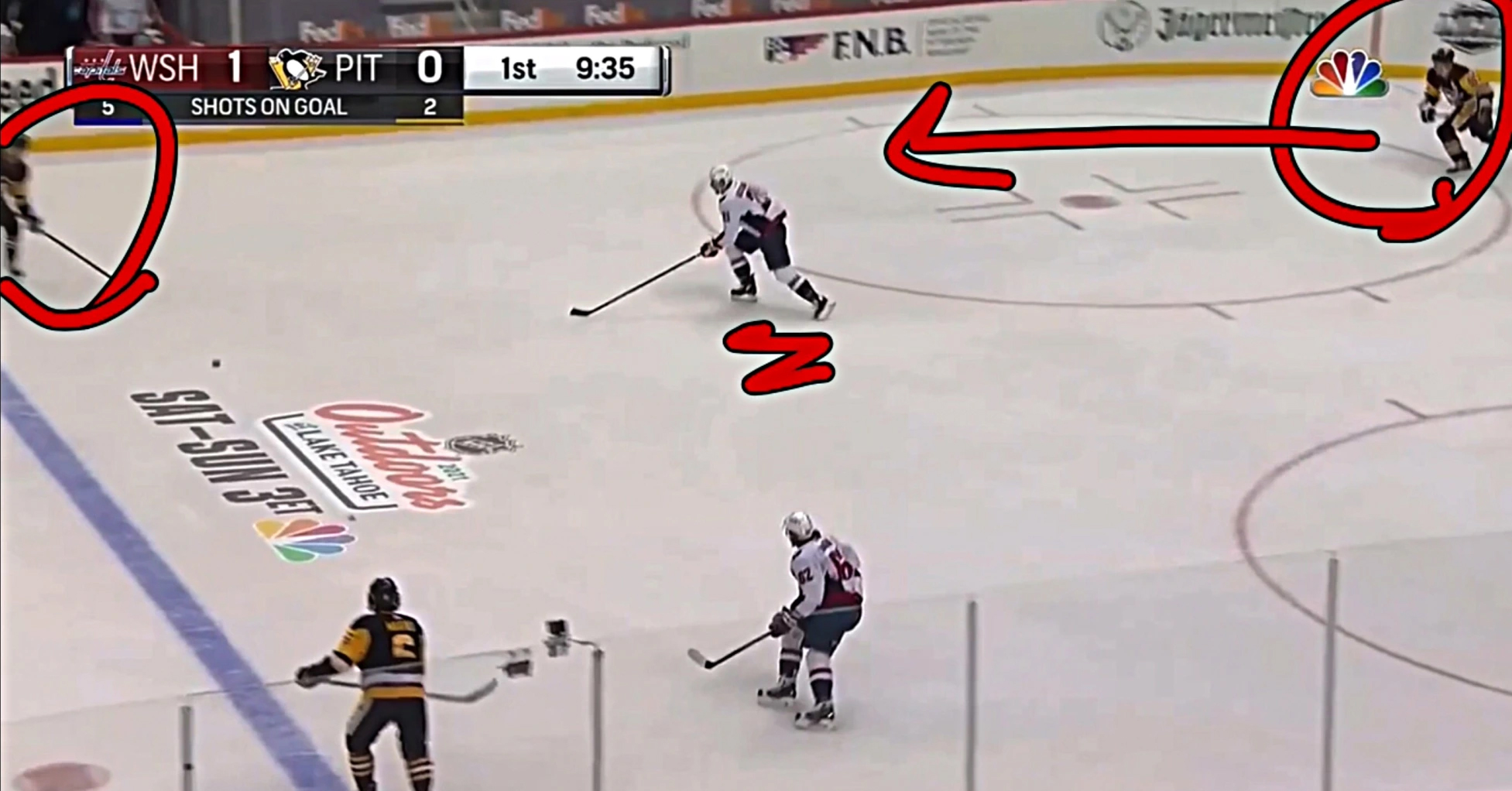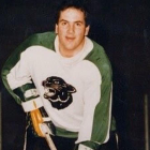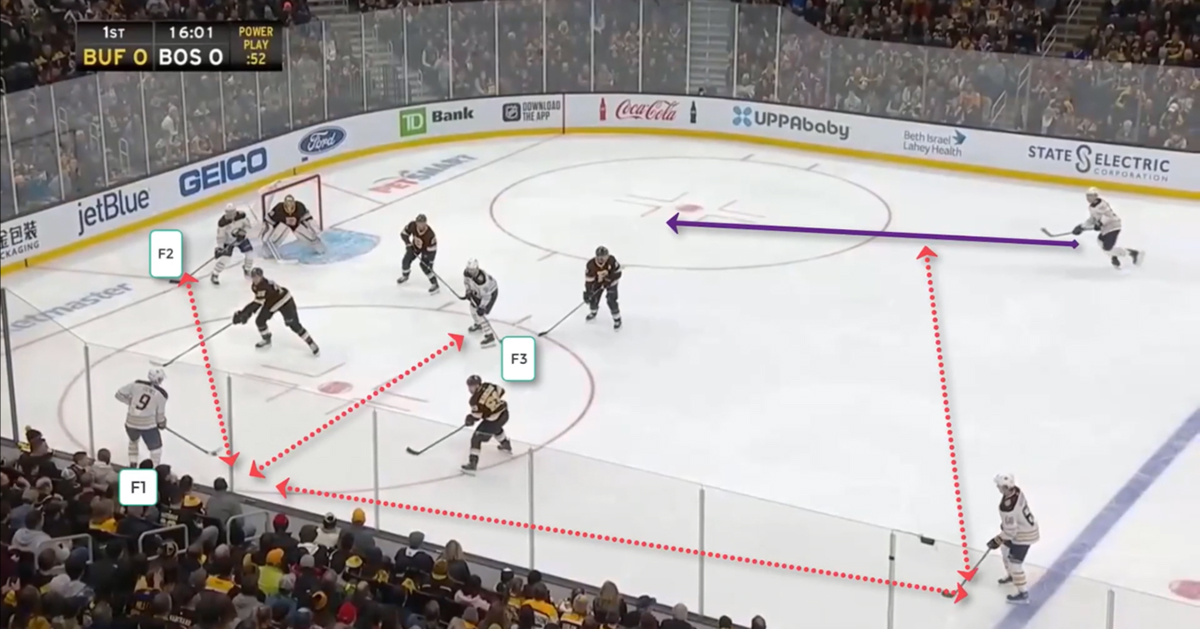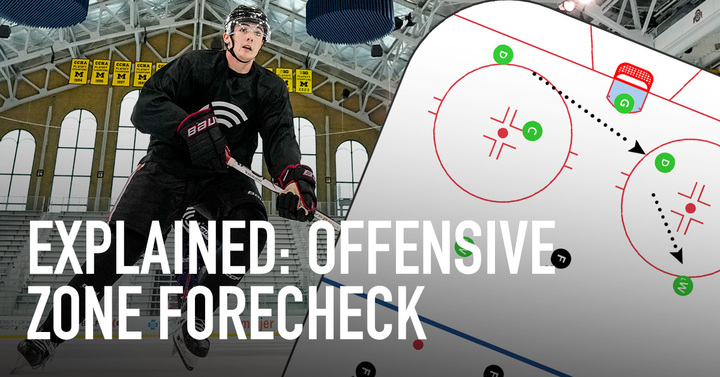Offensive tactics in today’s NHL are evolving rapidly as teams look for new ways to outsmart teams defensive structures and generate scoring chances. One strategy on the horizon is the repositioning of players to create unexpected opportunities. This involves innovative use of space and movement, targeting areas of the ice that teams are less prepared to cover. By changing traditional roles and positioning, teams can disrupt defensive coverage, leading to moments of confusion and breakdowns. These adjustments are not just about speed or skill but about understanding and exploiting defensive tendencies. The focus on the weak side post, has become a key element in modern offensive planning, showcasing how small tactical changes can make a significant impact.
Breakdown With Hudl Instat
In this clip made with Hudl, the Florida Panthers showcased the effectiveness of shifting F1 to the weak-side post. The player on the half wall is faced a high level of pressure and ends up pulling in two defenders. Meanwhile, F1 relocated from the weak side post to behind the net, creating a fresh angle for the next play. This movement forced the defensive team to leave gaps in their coverage. The behind the net positioning, enabled an easy support option for the Panthers player, allowing him to move the puck to a quieter area of the ice. This ends up leaving the Wild Dzone coverage exsposed, allowing the Panthers to successfully generate a high-quality chance, resulting in a goal!
Positioning Net Front Player Effectively
Shifting the net front player to the weak side post introduces a new layer of unpredictability to offensive plays. Behind the net, allows this player to become a pivotal option for puck movement, offering teammates a reliable outlet when under pressure. This spot allows players to see the ice clearly, reading defensive shifts and identifying openings for quick plays. With defenders forced to adjust their coverage, teammates can position themselves to exploit defensive gaps that emerge. Additionally, it makes teams ability to quickly transition the puck to open players makes this positioning a key element of maintaining offensive pressure.
Spreading the Zone
Want to disrupt a tight defense? By positioning a support player on the weak side post. This catches the defense off guard, forcing constant adjustments. As gaps form from their shifting coverage, offensive players can capitalizing on open spaces to create plays. Ready to transform those openings into scoring opportunities? Get your team moving quickly and watch the results.
Rehearsed Puck Release
Executing a rehearsed release allows players to handle defensive pressure effectively. This involves a player quickly sending the puck along the boards, confident their teammate is positioned to receive it. By knowing F1 is stationed behind the net, the puck carrier can act without hesitation, maintaining possession even in tight situations.
The rehearsed release also keeps the play alive in the offensive zone by limiting interruptions caused by defensive pressure. By consistently applying this tactic, the offensive team can sustain momentum and create continuous challenges for the defense. With proper execution, this play significantly contributes to dynamic offensive strategies, creating a flow that enables players to stay in control and maintain pressure against the opposing team. To learn more about Rhearsed Releases check out my article on The Coaches Site Scoring Big By Mastering The Rehearsed Release.
Introducing This Concept With Your Team
As today’s game continues to evolve, small tactical shifts like repositioning F1 to the weak side post, have been proven to be game changers. By using space creatively and forcing defenders into constant adjustment, teams can open up high quality scoring chances that weren’t available through traditional setups. Whether it’s supporting from behind the net, executing rehearsed releases, or disrupting zone coverage through smart positioning, these strategies create a significant edge.
Coaches and players who embrace these concepts will be better equipped to break down even the most disciplined defenses. The next step? Integrate these reads into your team’s practice and video sessions—and start turning defensive breakdowns into goals.

